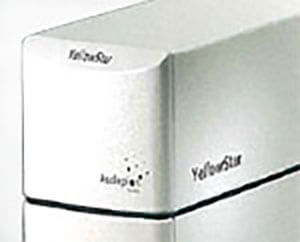Spider Veins Treatment
Treating Spider Veins
Unlike varicose veins, spider veins require no medical treatment. However their appearance can cause emotional distress and reduce self confidence particularly where the veins are visible on the facial area. Whilst prevention is always better than cure, there are a number of treatment options should spider veins develop.
See also 'What Causes Spider Veins?'
Sclerotherapy & Microsclerotherapy
Sclerotherapy is a common and effective treatment for spider veins. A solution is injected into the vein displacing the blood causing it to turn white or blanch. This solution is known as a sclerosing agent and is often a hyper tonic saline solution or Sotradecol (sodium tetradecyl sulfate).
The vein swells following irritation of the blood vessel lining, the wall of the veins bind together and the vein closes. Blood flow through the vein stops, the vein takes on a white 'blank' appearance and the vein eventually develops into scar tissue. After several weeks the color of the vein fades.
The patient does not need an anesthetic and this simple procedure can be undertaken in a doctors surgery. However as a burning sensation may be felt a doctor may include a mild anesthetic within the solution being injected.
Given the minute nature of spider veins, tiny needles are often used. Treating the tiny veins this way is known as microsclerotherapy.
Microsclerotherapy usually last for about 30-60 minutes and causes little discomfort to patients. In some cases they may experience a very brief moderate burning sensation which subsides seconds after injection.
Whilst sclerotherapy is a permanent treatment for existing spider veins, it can't prevent the formation of new ones. Hence steps should be taken to prevent the development of new spider veins (see preventing spider veins). Scelorotherapy is often used on legs with spider veins. Facial spider veins are often treated with laser therapy.
Sclerotherapy Side Effects
The side effects from this treatments is often minimal compared to the distress these veins have caused to the individual being treated.
Minor side effects include:
Slight blistering of the skin where solution from sclerotherapy seeps into surrounding skin. Any blisters heal quickly and a minute spot, resembling a freckle may be left. Over time these spots often disappear and bleaching creams can be used to hide those that do not disappear.
Cramps and stinging where the injections were made. These side effects are very short lasting and soon subside.
Swelling may sometimes occur around the treated area in patients whose lower leg or ankle have been treated for spider veins. This swelling subsides over time and patients with swelling in their legs should try to elevate them as much as possible and/or use compression aids.
Compression aids include compression stockings which are worn over the legs and reduce blood pressure and the amount of blood in the veins. However compression stockings for some may be uncomfortable to wear and the once removed the swelling can return. Also compression stockings can stretch repeated use, reducing their effectiveness. They should be replaced on a regular basis.
Bruising of the skin around the treated area may be occur, particularly in cases where the veins are weak. Like blistering, this side effect quickly disappears.
Brown lines and spots may appear on and along the treated veins. These disappear with time.
In some cases clots may also develop near the site of injection. These clots are not harmful and can be removed within two weeks of treatment to allow the area treated to heal normally.
Laser Treatment
Spider veins can also be treated using specially calibrated lasers designed to target the red and blue veins whilst leaving surrounding skin tissue undamaged. The laser heats the veins, sealing them off and the veins dissolve over time.
A moderate burning sensation may briefly be experienced. Cooling of the skin immediately before the laser pulses into the skin can reduce this feeling. Laser treatment sessions are short, lasting between 15-20mins.

YellowStar Laser
Laser treatment is more likely to be used on spider veins on the face sometimes in conjunction with sclerotherapy.
For example, the YellowStar laser may be used for the tiny thread like veins and sclerotherapy on the larger veins of the facial area.
The number of laser treatment and sclerotherapy sessions will vary on a case by case basis. There is usually a 4-6 week period between sessions so the effect from the previous session can be assessed (it takes a few weeks for the vein to fade).
Laser treatment of spider veins is accurate and efficient.
Possible side effects include redness or swelling around the area treated (which subsides after a few days) & discolored skin around the area treated (which disappears within several months).
In rare cases there may be burning of the skin around the area treated – however this is due more to incompetence of the doctor/physician and a reputable laser treatment surgery should be sought.